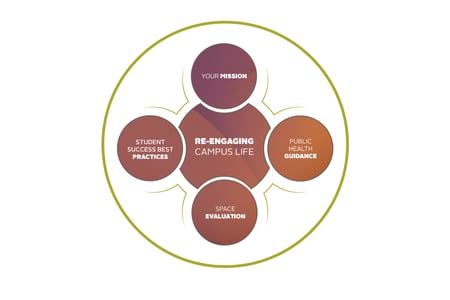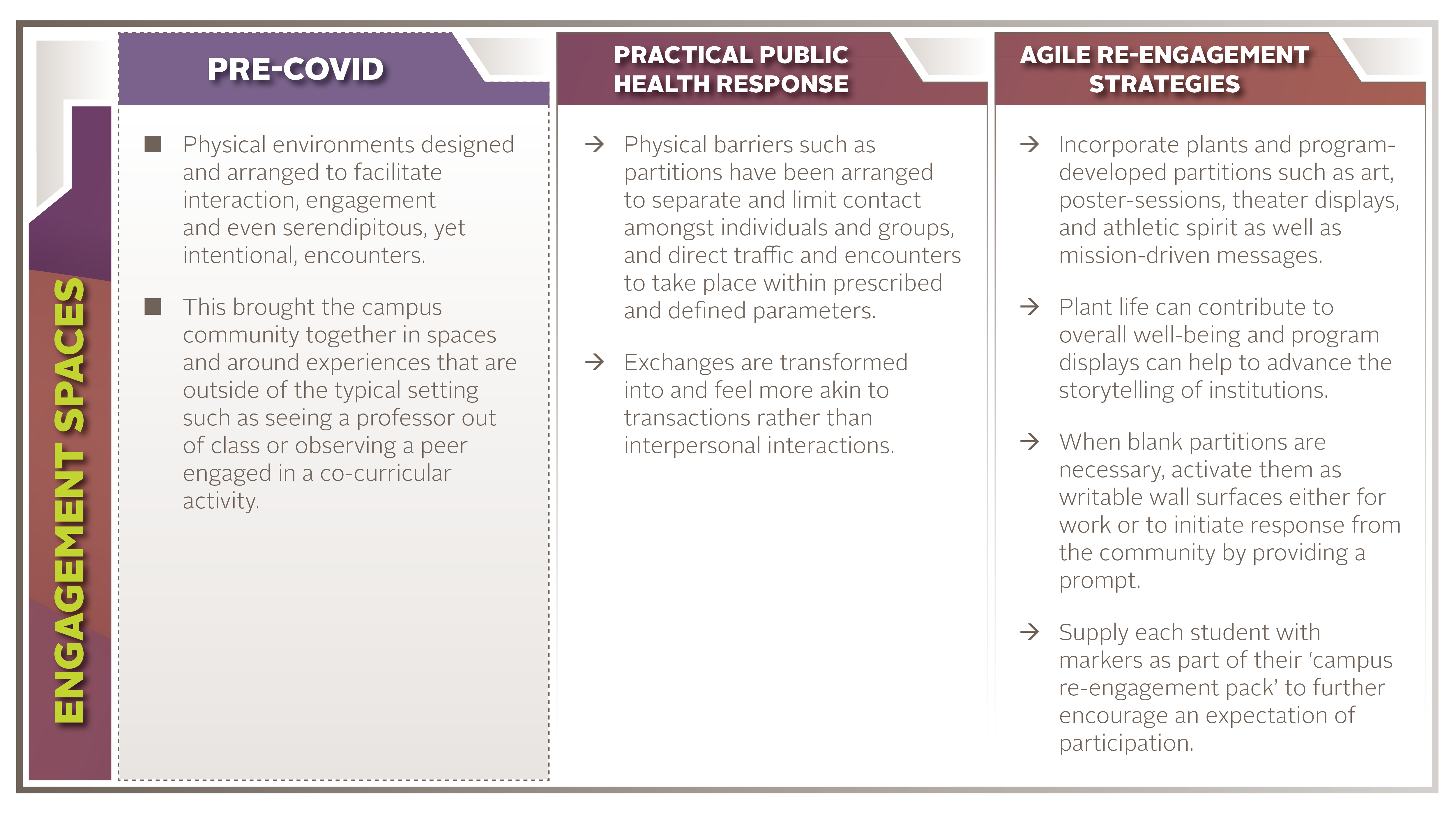
August 13 2020
In recent weeks, our team wrapped up a Leading Through Disruption interview and survey series with college presidents across the country. Collectively, these leaders serve nearly 70,000 students in 19 states at a range of independent institutions in city, rural, and suburban locations. This content series focuses on what we heard from them.
“What I am hearing from students is they miss their community. We’ve got to
prepare our campus environment and build intentional community around activities
that still allow us to be safe and socially distant.” – Miles Davis, President, Linfield College
Something we resoundingly heard from leaders was though COVID-related challenges have not changed their mission statements, the recent events have indefinitely changed the how or way institutions deliver the "traditional" college student experience. What is typically thought of as an asset – the campus environment that brings people together to share in experiences – immediately became the adversary that led to campus closures. Remote teaching and learning and virtual student experiences have been tested, are now being more intentionally designed, and deemed a necessary part of the next normal. Still, presidents are hearing loud and clear that students want to be back on campus experiencing some type of blended learning in a residential environment.
Re-Imagining Environments Through Multiple Lenses
A campus environment designed with student success in mind looks through a lens of student growth, development, and learning. It intentionally brings its community members together, engages them in active cooperative learning, and provides spaces for pause and reflection. A campus environment that is designed through the lens of public health and epidemiology socially distances its community members, separating and partitioning them from one another in an effort to direct movement and limit contact.
Let’s start with a practical repurposing example where public health guidance keeps us focused on social distancing and contact minimization strategies. Imagine a lobby immediately adjacent to a large theater or performance hall. This space typically supports large events. In a socially-distanced-environment, how can this lobby be utilized for different functions such as active meeting locations, boxed-meal distribution areas, and additional dispersed seating areas where the volume of space and modicum of sound transference would be seen as an asset?
Now, let’s move beyond practical repurposing to a more agile and sustainable re-engagement example that considers your mission and student success best practices. This type of thinking frees your team to take incremental steps that fold into broader strategic efforts.
Moving to Agile Campus Re-engagement Strategies

Flexibility and Agility Beyond Fall
These are fast-changing times with new variables entering the equation every day. Scenario implementation is not a one-time, fixed event. With fall semester now or soon underway, it may not be feasible to enact all strategies. The social distancing and contact minimization actions you have taken, with considerations for student success and mission, will provide a foundation to develop and implement practical and strategic adaptations in the weeks and months ahead.
Download Agile Campus Re-engagement Strategies and focus positive energy and investment in creating the student engagement experience you can and want to provide students now and as you look to the future.
Talk to us any time about COVID, campus environments, and re-engaging campus life for student success. Contact us to start the conversation.
Related Blog Posts
Recent Posts
- Richard Dunsworth, J.D., To Receive 12th Annual Courageous Leadership Award December 16 2024
- Meet the 2024 Credo Values Award Recipients August 27 2024
- What is Executive Coaching, Really? June 25 2024
- Credo & The Constructive Dialogue Institute Announce A New Partnership For Higher Education Leadership Development March 7 2024
- Celebrating Women And Gender-Diverse Learners & Leaders February 28 2024
Categories
- Strategy
- Leadership
- Student Success
- Student Success & Retention
- Enrollment
- Pivot
- Strategic Planning
- Leadership Development
- News
- Strategic Enrollment
- Campus Planning and Architecture
- Moving the Needle
- Data
- Research
- Retention
- Campus Master Planning
- Enrollment & Financial Aid
- Academic Programming
- Campus Planning
- Thriving
- Admitted Student Research
- Architecture
- Finance
- Advising
- Admissions




